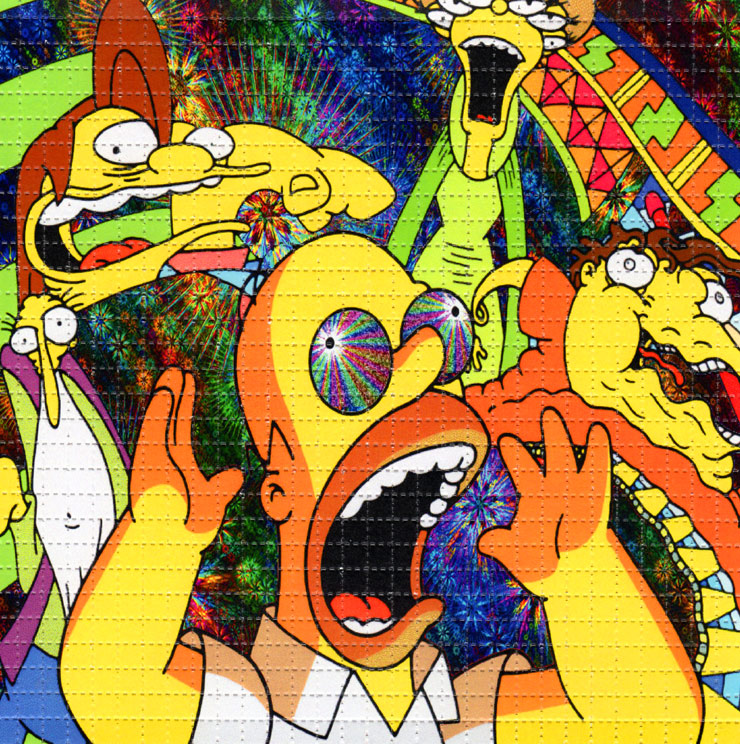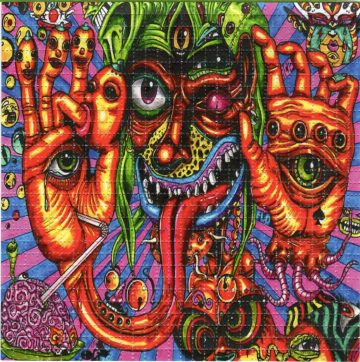

It’s a new word, and the word hasn’t been with us very long.”Īnyway.

And the first novel that had the word was. “ The Psychedelic Sounds of The 13th Floor Elevators, who I just saw play on Halloween. “The first record to have the word 'psychedelic' on the album was The 13th Floor Elevators, from Austin,” he says. Upon learning that I grew up in Austin, Texas, he quickly tells me it’s the birthplace of psychedelic rock. McCloud is a longtime San Franciscan who says he’s “always been an artist” but that his "main hobby has always been the collecting and cataloging of LSD on paper.” He is a veritable trove of trivia. When making an appointment, give your reasons for wanting to go so the owner can decide who to group you with. Contact Mark McCloud at or leave a message and phone number at 41. The LSD Blotter Museum is open to the public, but by by appointment only. McCloud sells some images on his website. These pieces of paper were vehicles for going on psychotropic trips, making them about as ephemeral as art can get, but blotter artists still took great care in crafting the images. There’s also some truly exquisite artwork in McCloud’s collection. Scan the Institute's collection-a fraction of which is published on its website, Blotter Barn-and you’ll find a wide-ranging spectrum of art that McCloud’s been collecting since the 1970s. Not only did this serve to identify a brand of acid, but by using Blotter Paper, which weighed far less than other mediums, it kept drug dealers who got busted from getting as much mandatory time.McCloud calls his house the Institute of Illegal Images. The logo could have been professionally printed or have been a rubber stamped image. Shortly after, iconic images began to make their way onto the Blotter Paper, which allowed dealers to put their own logo on the acid they were selling. In the early 1970s Blotter Acid began to make an appearance on the streets of San Francisco. The foremost Blotter Art historian, Mark McCloud, suggests that after Owsely Stanley’s pill press was busted, that Blotter Acid began to make its way on to the streets, replacing the pills as the standardized medium. The first blotter sheets were simply white sheets perforated into hits, soon after that, coloured paper was used and the designs began to become more elaborate, many times reflecting the signs of the time. Therefore a drug dealer busted with one dose of acid on a sugar cube that weighed 1 gram would get the same sentence as a dealer caught with 1 gram of LSD crystal, which would represent about 10,000 doses of LSD! It didn’t take a genius to figure out that a new, lightweight, medium for distributing LSD was needed. These laws placed mandatory sentences on drug offenders based on the weight of the substances with which they were caught. Sometime after LSD became illegal, mandatory minimum sentencing was set into place. As a bonus, the dealers would get a kick out of the buzz created by their “brand” of acid. This also served as a form of a validation of authenticity, proving that the dealers were not selling fake LSD. The chemists would make the pills a certain shape or colour as to set them apart from others, especially if they were packaging particularly potent dosages.

Dealers began to want their batch of LSD to be recognizable from the others, so they began to invent ways to trademark their acid. It was also sold on anything from sugar cubes to animal crackers. In the 1960s, when LSD was legal, it was distributed in large pills, sometimes called barrels because of their shape. Five Examples of LSD “Blotter Art” from the collection of Mark McCloud


 0 kommentar(er)
0 kommentar(er)
